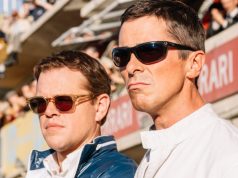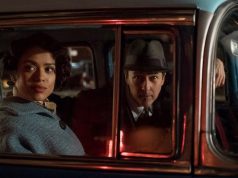I have often criticized fact-based films for seeming to believe that because they sprang from true stories, that relieved them of all responsibility to tell the stories in an interesting, engaging manner. Too often, filmmakers fall into that trap: It’s true, so it must be interesting automatically.
“Rabbit-Proof Fence” is that rare film whose real-life basis is, in fact, so interesting that no embellishment is needed. No cinematic tricks or narrative alterations are necessary to make it into a riveting motion picture, because what happened is already so powerful that the facts speak for themselves.
It is set in 1931 in Australia, where the government has just begun a shameful policy that would last for 40 years. Under the law, “half-caste” children — fathered by white men but born to aborigine mothers — can be taken by the government and “civilized” in camps, where they are taught the skills necessary to become maids and servants.
Three children — Molly (Everlyn Sampi), her sister Daisy (Tianna Sansbury) and their cousin Gracie (Laura Monaghan) — are thus taken, forcibly and despite the sobs of their grief-stricken mother and aunt (Ningali Lawford). They are removed to a camp 1,200 miles to the south, where they live in barracks with other children similarly kidnapped, all of whom seem, by now, resigned to their fate. “Nobody here has any mothers,” one of them says. “We do,” is Molly’s reply, unable to fathom, in her 14-year-old innocence, how such a thing could be said.
And so Molly, Daisy and Gracie sneak out of the camp and head for home — on foot, following the 1,500-mile-long fence that keeps the rabbits from destroying the farmland on the western part of Australia. They are pursued by a tracker named Moodoo (David Gulpilil) whose record at recovering runaways is flawless but who has his own drama to contend with: His indentured servitude is over, but if he leaves his job at the camp, he will not be able to take his daughter with him.
The journey of the three girls is incredible to contemplate, but throughout it, a nagging question persists in the back of the viewer’s mind: Even if they make it back to Jigalong, won’t the government just come take them away again? The end of the story is joyous, tragic and overwhelming, all at once, and is accompanied by shots of the real Molly and Daisy, now well into their 80s and still living in Australia.
Director Phillip Noyce (“The Bone Collector,” “Clear and Present Danger”) has a brilliant piece of work on his hands here. The cinematography, by Christopher Doyle (an Australian who has done mostly Chinese films so far), is nothing less than beautiful, capturing the natural beauty of the Outback with breathtaking skill.
Few of the actors are even actors; most have never appeared on films before. Only Kenneth Branagh as the benighted government head who enforces the Aborigines Act is recognizable. The non-professional girls who play the central characters have a naturalness about them that probably could not have been faked. The give very simple performances that, in this very simple film, contribute to emotions that are anything but simple.
A- (1 hr., 33 min.; )





